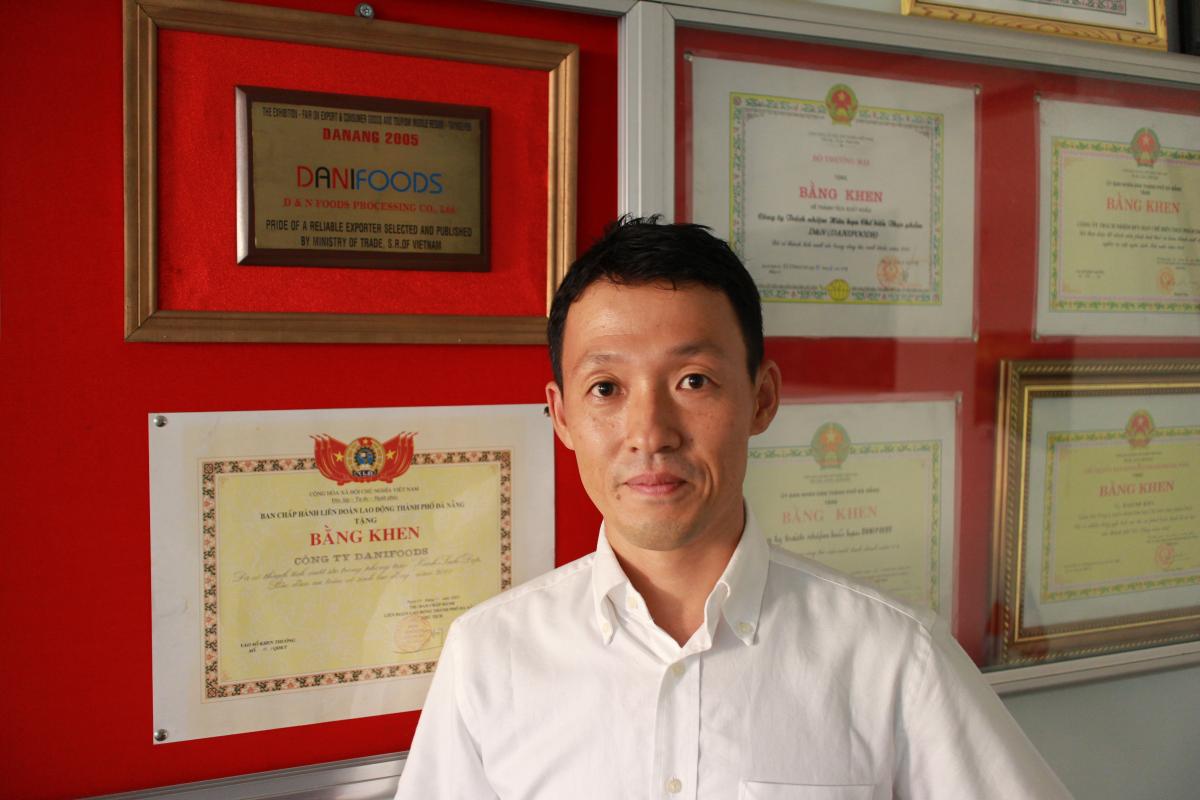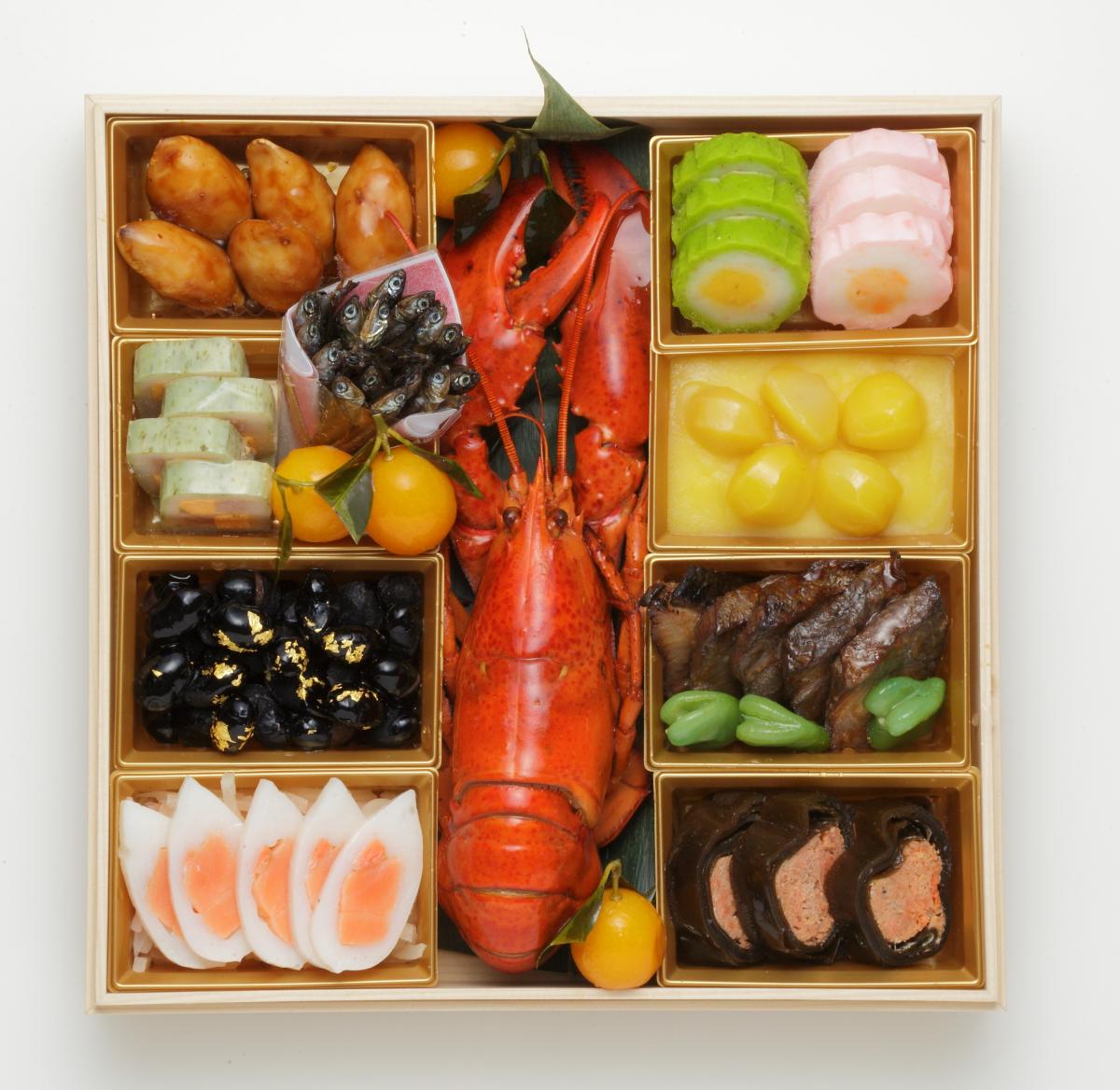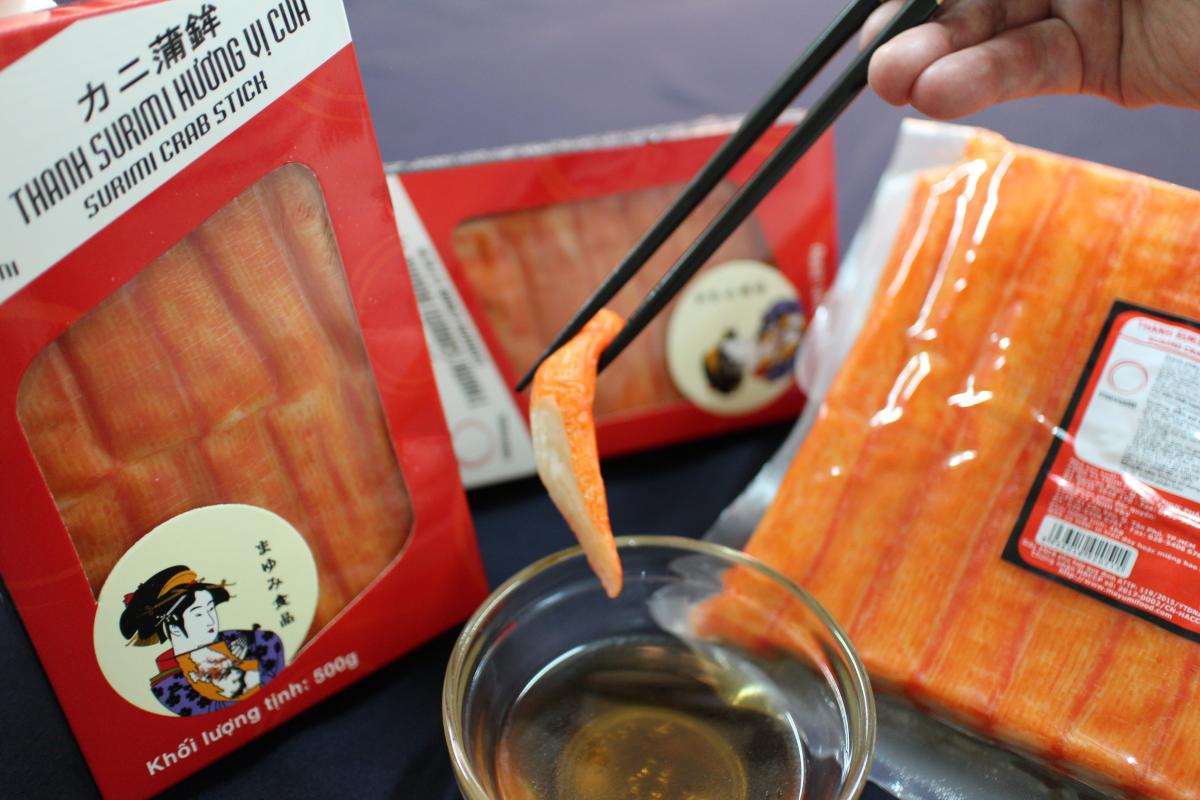LOCATED in central Vietnam, Da Nang City is one of the country’s fastest growing metropolises. Its temperate climate and natural beauty make Da Nang one of the major destinations for local and overseas tourists. Apart from boasting a healthy tourist industry, over the years the region has become a desirable location for establishing businesses and is now a major commercial center in the country.
One company that saw the commercial benefits of establishing operations in Da Nang is DANI Foods, a wholly owned Japanese company that manufactures traditional Japanese fish- based food products for export and domestic consumption. Recently Anthony Evans, correspondent for FPMJ, caught up with Akihiro Niihara, Managing Director of DANI Foods Vietnam to find out what’s new with the company.

Akihiro Niihara, Managing Director of DANI Foods
Could you tell us about DANI’s operations here in Vietnam?
DANI Foods is a part of the Japanese based Daiichi Chinmi Company, which was founded in 1960. Over the 57 years that Daiichi Chinmi has been producing high-quality traditional Japanese food products, it has gained a leading reputation in Japan for its consistent quality and traditional flavors. Back in the mid-1990s Daiichi Chinmi looked to the future and developed the strategy to move part of their processing operations offshore, and Vietnam was the obvious choice. Our decision to go offshore was part of our mother company’s strategy to minimize their Japanese operating costs, particularly in the area of labor costs and raw materials. The company looked at various location options here in Vietnam such as, Hanoi, HCMC, Vung Tau, but settled on Da Nang for its good access to raw materials, strong logistical support, as well as general business considerations such as being less of competitive environment. So, in 1996 DANI Foods started operations here in Da Nang, and we’ve come a long way since those early days. Our workforce has grown from 149 in 1996 to its present number of 550.
What are the products your company processes in Vietnam?
Well there’s quite a long list, but generally speaking, we make a variety of traditional Japanese food products made from fish paste known as SURIMI, which is the main ingredients in just about all our products. SURIMI is very popular in Japan, and in the past many manufactured the product here. But in recent years a lot of these companies have closed, leaving DANI Foods to be one of the market leaders.
Our products are processed in a number of different ways, for example, in our stream process range we have: Imitation Crab Stick and Chunks, Fuji Fish Paste, Squid Sausages, Crab Sausages, Salmon Sausages, Frozen Skewered Fish Cakes, and Frozen steamed fish paste ball with cuttlefish head, just to name a few. In our roasted product range you’ll find products such as Sea Urchin, Squid, Pine Cone Fish Rolls, Frozen Roasted Tile-fish (soaked with soybean), Frozen Salted and Roasted Pacific Saury.
We also have a variety of fried, and dried products in our range, as well a couple of raw fish items. We offer value-added products such as Frozen Steamed Fish Paste topped with Shiitake Mushroom, Matsukasa Ika, and Ebi Nishaki, but these are just a few examples. Our product portfolio is quite extensive. I should add that our products are made with all-natural ingredients, and are preservative free. We do use some flavor enhancers and occasionally some food coloring, it depends on the product.
Are your products mostly made for the export market?
Only about 10% of our products are consumed locally, which are distributed nationally through our agent here in Vietnam. Around 70%, of our products and certain ingredients such as fish paste, are manufactured specifically for our mother company in Japan, with the remaining 20% going to the US, Hong Kong and Korea. We’re always looking at developing new potential markets in the region and further afield.

DANI Foods's extensive range of seafood products are made with all natural ingredients are are processed without preservatives
Where do you source fish and other raw materials?
A certain percentage of our raw materials are sourced locally as Da Nang is also a major fishing port. But as with all fish markets, supplies can fluctuate, and a number of our products requires a certain type of fish to maintain the traditional Japanese flavors, and a number of these fish can’t be sourced locally, so we import a broad range of fish specifically for these specialize products. Presently, we import around 11 different types of fish, sourced from over 10 different countries as far afield as Iceland and Russia. I should also point out that all our raw materials, whether imported or sourced locally, are purchased to the highest quality control and safety standards.
What is the shelf life of your products, and how are they packaged?
As all our products are frozen, and shipped frozen once they’re made, our products shelf life is around two years. Obviously, a long shelf life is a great advantage when dealing with perishable food items, and it allows us to market our products in other countries such as America. A long shelf life is also a great advantage for the food outlets that consume our products.
As our customer base are commercial food outlets such as hotel and restaurants, we pack in quantities suitable to their needs, and we use standard plastic wrapping in the process, nothing fancy like you would find packaged on supermarket shelves.
What is DANI Foods’ production output?
On average we produce around 5 tonnes of product items and up to 10 tonnes of SURIMI per day, which we use in our own manufacturing, and by our mother company in Japan, to support their processing operations. This is just an average estimate of our output, however, we have the capacity to produce more, depending on the demand and supply of raw materials.

Imitation Crab Stick and Chunks are among DANI's major products
Manufacturing with perishable ingredients requires a great deal of quality control and food safety procedures. What systems does DANI Foods have in place to maintain quality control and food safety?
Being a Japanese operated company, maintaining quality and safety is always our highest priority. We have HACCP certification, which is an international standard defining the requirements for effective control of food safety, and we also follow the USA Food and Drug Administration’s (FDA) requirement for food manufacturing. Additionally, as part of the above-mentioned standards we comply with, we conduct regular training of employees, and this is a big part of our operations here in Vietnam.
Regarding the marketing and sales of your product. Is that something that’s done through your Vietnam operations, or is DANI Foods not active in these areas?
Up until now our operations here in Vietnam has been specifically the manufacturing of the product, even our local marketing and sales has been done throughout local agent. However, with the continuing growth and increasing affluence here in Vietnam we see the potential to change this situation and develop an in-house sales and marketing strategy to increase our presence here in Vietnam.
On the company’s future strategy, what potential growth areas are you presently considering?
We certainly see the potential in developing the local and export markets to a greater extent, and maybe developing similar products that would suit the local tastes. However, a lot depends on seeing how local labor costs potentially increase in the future. China is a good example of the negative impact of rising labor costs, and this is what could happen here in Vietnam. This type of increase in operating expenses would have a big impact on any strategy we’re presently exploring. We’re looking at the feasibility of a number of different growth strategies, but we’re still very much in the early stages of finalizing our vision statement for future growth.
Air Max 95 Stussy













